- Tags:
- Anime / Boys can be princesses too / child-rearing / Criasu Corporation / Cure Yell / diversity / Emiru Aisaki / end card / Episode 19 / Gelos / Hana Nono / Henri Wakamiya / Hugtto! Precure / Interview / Keisuke Naito / Magical Girl / Masato Aisaki / Oshimaida / Precure / producer / self-affirmation / Toei Animation
Related Article
-
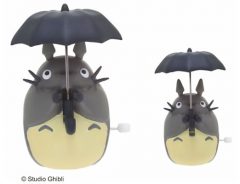
Charming Wind-Up My Neighbor Totoro Toys Treat You To An Umbrella Dance
-
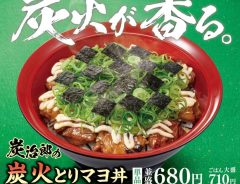
Japanese beef bowl chain serves up Demon Slayer bowl inspired by Tanjiro
-

Retro lineup of Creamy Mami fashion items released
-
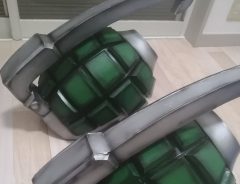
Amazing My Hero Academia cosplayer has surprising source for his Katsuki Bakugo weaponry
-
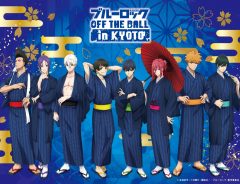
Attend a special Blue Lock event in Toei Kyoto Studio Park and visit a shrine famous for sports!
-

This Is How Japan Celebrated April Fool’s Day 2018
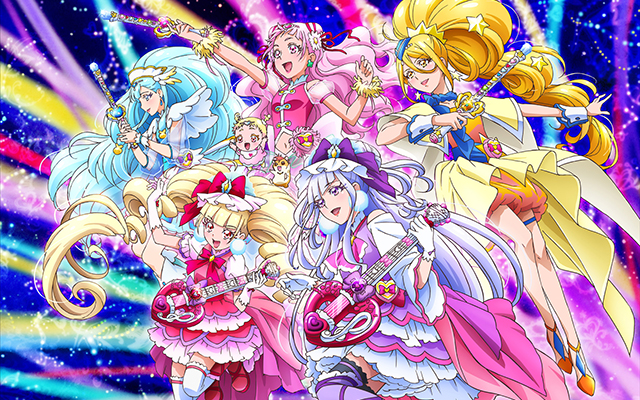


Hugtto! Precure
As many anime fans know, Hugtto! Precure is the latest incarnation of the highly popular magical girl anime television franchise Pretty Cure. Created to celebrate the 15th year of the franchise, Hugtto! Precure follows the story of 13-year old Hana Nono, a girl who aspires to be seen as grown up, who encounters a mysterious baby called Hug-tan who has a Mirai Crystal containing the positive energy of a shining tomorrow. In her desire to protect Hug-tan from the evil Criasu Corporation who want to take the crystal away and thus rob everyone of their future, she transforms into Pretty Cure of High Spirits, Cure Yell. Together with classmates Saaya and Homare, they form the Hugtto! PreCure team in hope to protect people's future from the Criasu Corporation.
The anime franchise is known for pursuing the theme of acceptance and diversity, as expressed in its current incarnation through the motivational slogan: "I can do anything, I can be anything." Hugtto! Precure has particularly been noted in the anime community for its sensitivity to changing times, and Episode 19, which aired on 10 June 2018, which contained the line: ‘Boys can be princesses too!’ created quite a buzz in social media both within Japan and abroad.
We sat down with Hugtto! Precure producer Keisuke Naito to learn more about what motivates the characters and the vision behind the story as we know it.
(This interview was conducted in July, 2018, at the Toei Animation office in Tokyo)
Interview
Continued from Part 1
Masato and Henri: when two worlds collide
gJ: I’d like to ask you about Episode 19. When Masato tries to admonish Henri for wearing a dress, Henri replies: “I will wear what I like. Limiting yourself with restrictions is a waste of time. A waste of life.” Hearing these words, Masato stops in his tracks, jaw agape and eyes swimming, clearly in a state of severe shock. Why was Masato shocked to such an extent?
KN: Especially nowadays—these past few years—Henri’s way of thinking has become more known and has started to take hold (in society). But we portrayed Masato as a character diametrically opposed to Henri, a boy from a venerable zaibatsu-like family highly concerned with social standing, where it was normal to think “girls should be this way,” and “since you’re a boy, you must do this.” Masato was raised with such values, so when Henri, with his radically different values and world view, appeared before Masato, he was shaken to that extent. At the same time, in the episodes that follow, the chasm between Masato and Henri becomes narrower. Masato learns to appreciate Henri for showing him a new world view, and he even comes to strongly sympathize with his way of thinking.
© ABC-A, Toei Animation
gJ: So that’s why we see Masato at the end of episode 19 with a gentler expression on his face as he attends the fashion show.
KN: Yes, yes, exactly.
gJ: That really comes through.
KN: Right.
Cherish your heart
gJ: When Henri hugs the Oshimaida generated from Masato, he says to it: “I can’t change myself for you. My life belongs to me. I’ll cherish my own heart, and you should cherish yours.” Does this mean that the reason Masato became negative is that he doesn’t like himself?
KN: Or rather, he had no “self” to begin with. Up to that point, Masato had lived with externally implanted values, frozen in a kind of stasis, neither thinking for himself nor even feeling the need to do so. Encountering Henri was a shock—the shock of encountering something new—but I also think there was a sense of recognition, a realization that Henri’s way of thinking made sense.
gJ: I’m sorry if there was something I missed, but up until now in the show, has there ever been a line such as: “I don’t like myself”?
KN: Although Masato has never particularly felt a need for self-denial, at the same time, he has probably lived out his life thus far repressing any expression of his individuality.
gJ: So then, could you say that Henri’s line: “You should cherish your heart,” indicates that he somehow sensed or imagined how Masato felt?
KN: Well, that’s what great about the lines written by our scenario writer. I’d rather not say that there’s only one correct answer and leave some interpretation to the viewers. So, if you think it seems that way, then I think that’s the right answer for you.
The meaning of correctness
gJ: I understand. Masato’s name is spelled with the kanji tadashii 正, meaning “correct.” When he tries to take Emiru home with him, he tells her: “’Hero’ is a word made for men. Girls need to be protected. You have to use words correctly.” Taking that into consideration, it seems that Masato is particularly concerned with correctness when it comes to words and definitions. Did you have any intention of emphasizing the sense of correct language with Masato?
KN: Hmm... That’s quite a deep question (lol)
gJ: Well, that tadashii kanji for Masato seemed intentional and, after all, he does say: “You have to use words correctly” and “'Hero' is a word made for men,” so I thought that Masato was someone who was particularly concerned with correct language.
© ABC-A, Toei Animation
KN: When it comes to Masato’s name as well as his lines about what is or isn’t correct, as I said earlier, this is Masato’s character. His background, having been raised in a family with a way of thinking that hasn’t changed for generations... It’s just one family style, and I don’t want to reject that. I think his lines were simply a technique—within the limited time he appears on screen—to create the impression that he comes from a family with old-fashioned morals and values. As his name Masato conveys, he does believe he is correct, and when he sees something that even slightly varies from what he believes in, he says “that’s not right.” That’s why he said what he did to Henri and it was the same with Emiru.
Can a boy become a Cure?
gJ: I understand. The theme of the fashion show is “Girls can be heroes too.” It seems that this experience plays an important role in Emiru’s process of aspiring to and then becoming a Cure. Is it also intended as a counter to Masato’s line: “Girls can’t become heroes” ?
KN: There’s that too, but most importantly, it relates to the theme which I mentioned in the beginning that the future is infinite, and anything is possible. Neither do you have to limit yourself nor do you need to feel limited by others. I think this notion that you should pursue whatever you wish to do and whatever you think is good also connects to self-affirmation.
gJ: I see. When Henri is captured by Oshimaida, he says: “It seems I’m in the princess’ position,” to which Cure Yell replies: “It’s OK. Boys can be princesses too!” Does the word “princess” here simply have a situational meaning because he fell from Oshimaida into Cure Yell’s arms in a himesama dakko 姫様抱っこ [literally a “princess-style”] hug, or does it refer to someone like Henri who is dressed like a princess?
KN: That line in that situation means he is in the role of someone requiring protection. Of course, putting him in that position within that situation is an intentional combination technique.
gJ: So then, the nuance is: there are times when you need protection from a hero, whether you’re a girl or a boy?
KN: That’s right, yes.
gJ: I get it. It seems reasonable to assume that Henri, to the extent that he is participating in this fashion show [entitled "Girls can be heroes too"] believes, just as Emiru does, that he can become a hero. I can’t help but think of this as a hint that Henri holds the potential within him of becoming a Cure. Will we ever see a boy become a Cure in this series?
KN: Anyone can become a Cure if they want to. Of course, this also means the girls watching Hugtto! PreCure on TV. There may also be little boys watching it too. This is a message for all the children watching the show. I think anyone can become a Cure.
gJ: Whether they are humans or androids.
KN: Yes, indeed.
gJ: Anyone has the potential to become a hero, to become a Cure. I understand. And if a boy wants to wear a dress and take on a girl’s look, that’s proof that they cherish their own heart so let’s accept them. Is that a message you’re trying to convey to the kids watching TV in this episode?
KN: That’s right. Well, a dress is just one example, so I think if they want to wear one, then that’s fine. But we don’t want to put any special emphasis on gender. The important thing is: Cherish yourself. It’s OK to like yourself more. Do what you’d like to do. There’s a chance you may face small hardships as a result but take a big step forward, even if you do. How wonderful it is to advance towards tomorrow, towards your future. This is a message, a theme which runs through the entire show.
A hidden message in an end card?
gJ: I understand. The end card of Episode 19 carried the message: “Even villains can leave work on time.” Was this a message to the parents watching with their kids? For example, hurry up and go home to spend time with your kids. Was that the intention behind it?
KN: As far as end cards go, the producer does check them, but basically, it’s the assistant director who’s in charge of making them to convey the message “see you next week” in a funny or interesting way. I’m not certain about what message was implied in “we can leave work on time,” but your question put me a bit on pins and needles (lol)
gJ: Really? (lol)
KN: The end card is one example, but at times, you’ll see Criasu managers going to visit customers directly from home and going home directly, getting proper receipts when they use taxis, and even leaving work on time, so we sometimes hear the opinion that it’s not such a bad company after all. Details like that make you wonder if things mightn’t be so bad in our world after all (lol).
gJ: I see. I think it’s interesting. I don’t think there has been a real company like Criasu in a PreCure series before. Also, it seems like the Japanese word kurai 暗い, meaning dark, is contained within Criasu. So, is darkness and negativity intended in that name?
KN: Yes. It was Mr. Sato, the director, who came up with the name. The theme of the show is the future, having positive feelings and the power of positive energy. Naturally, the enemy’s presence had to come into conflict with that. So, when we were choosing names, we thought we could take kurai, as you said—in other words, darkness—and combine it with asu 明日, meaning tomorrow. That sounded like “crisis,” which we thought was cool, so we decided on it quite quickly: the Criasu Corporation.
© ABC-A, Toei Animation
gJ: The character Gelos, does her name come from the English word “jealous”?
KN: Actually, her name comes from rosujene ロスジェネ [a Japanese term for “lost generation,” in reference to the last decade of the 20th century following the “Bubble” era].
gJ: Ah, I see.
KN: We chose names which sound like Japanese salaryman slang.
Celebrating Diversity
gJ: Is that so? I see. Whether it’s an android, a boy who likes wearing dresses, or whoever it may be, the Cures will all hug them, so to speak, and welcome them with love. In that sense, I get the impression that it’s an anime which celebrates diversity. Is that interpretation correct?
KN: That is correct. Looking at the PreCure series these past few years, whether it’s last year’s Kira Kira PreCure a la Mode or Maho Girls PreCure! the year before it, it may sound strange to say it’s a recent trend, but at the very least, there seems to be a demand for it in the world, so we’ve made efforts to include diversity.
This year, we’re featuring child rearing and self-affirmation in addition to diversity. With Maho Girls PreCure! we used magic, but it’s diversity that we really wanted to express. In last year’s Kira Kira PreCure a la Mode, Cures with all kinds of unique personalities were united in having something they loved. This year, we also have, in the main character and her surroundings, unique personalities, all of whom are affirmed and accepted in the story of Hugtto! PreCure. I even think that diversity has become an indispensable theme in recent PreCure anime. And it’s precisely because it’s an anime for children that I think we need to convey this message.
© ABC-A, Toei Animation
gJ: I think that's profound. I don’t know if "responsibility" is the right word for it, but do you intend to convey to the children watching that you want the future to be a certain way, that you have a specific vision for what society should be?
KN: Well, I don’t want to say that “this” is the right answer, or to provide any model cases. It’s merely a boost, something we hope will provide opportunities for the viewers.
gJ: Thank you very much for your time.
KN: Not at all. These were all very deep questions…